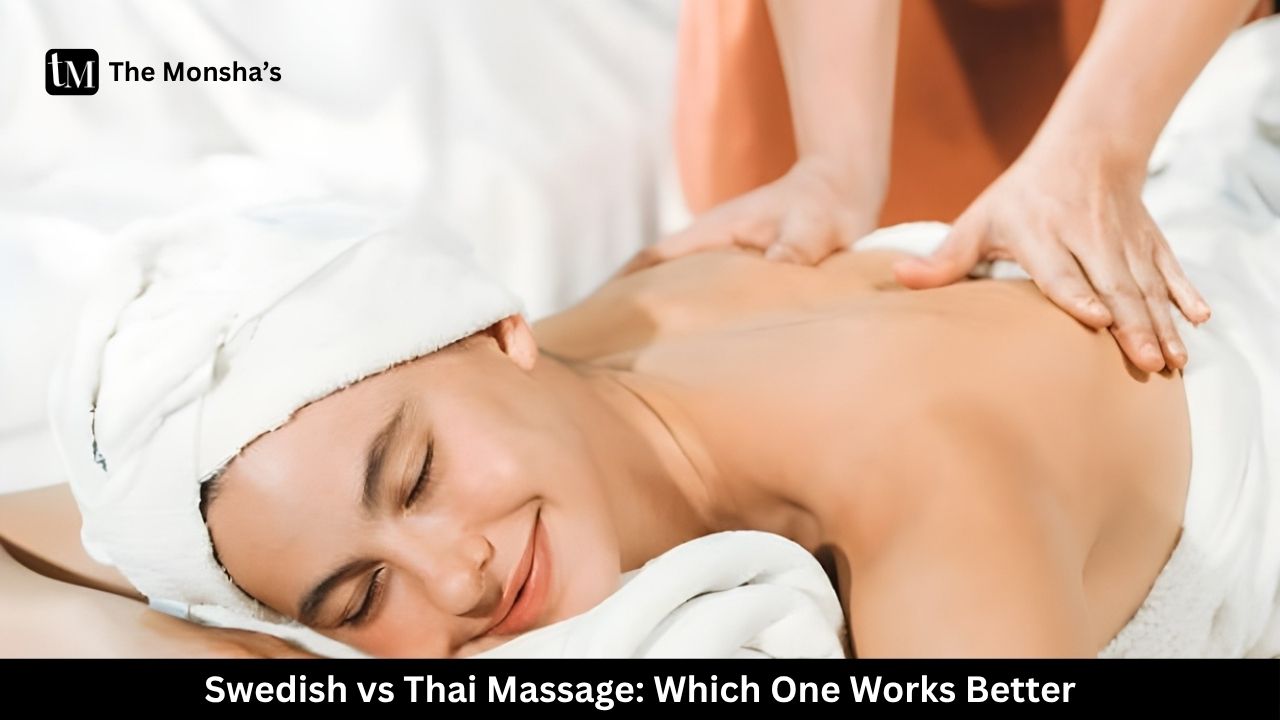
Swedish = relax, de-stress, melt muscle tension with oil-based strokes.Thai = stretch, mobilize, energize with assisted yoga + acupressure.If you need calm + circulation, choose Swedish. If you need flexibility + joint mobility, choose Thai. For many people, alternating (or hybrid sessions) gives the best results. “Kabhi Swedish se sukoon, kabhi Thai se junoon — body khush, mind khush.” 😉
There I was, slumped after a week of screen time and neck knots, staring at the spa menu like it was a physics paper. Swedish sounded soft and dreamy; Thai looked like gym class in slow motion. Which one would actually fix my back-that-feels-45? Let’s cut through the fluff and give you a real-world guide to how each massage works, who it’s for, and how to choose — without needing a wellness PhD (or three cups of coffee).
A classic Western massage using oil and long, gliding strokes (effleurage), kneading (petrissage), frictions, and light percussion to ease muscle tension and boost blood flow.
Research snapshots consistently show relaxation massage can reduce perceived stress, ease muscle soreness, and improve sleep quality — especially when sessions are consistent over a few weeks (no report names, just the gist).
A clothed, mat-based treatment blending assisted stretching, acupressure along energy lines (sen), joint mobilization, and rhythmic compression. No oils needed.
Evidence summaries often note improved flexibility and functional mobility after Thai sessions, with short-term relief in musculoskeletal discomfort and better proprioception.


Swedish wins. The nervous-system downshift, slower cadence, and steady pressure help with perceived stress and sleep latency. If your shoulders live near your ears, start here.
Thai wins. Assisted hip openers, spinal twists, and hamstring stretches change how you move — especially if you sit a lot or train legs.
Both help; Thai edges ahead if posture is the culprit (thoracic extension, chest opening, hip flexor release). Swedish excels when muscle tone is high and you need de-armoring first.
Thai for mobility and fascial glide; Swedish for flushing metabolites and reducing soreness. Many athletes rotate.
Swedish is easier on the intro; then graduate to Thai once your body trusts the process.
“Simple rule: sukoon chahiye toh Swedish, stretch chahiye toh Thai.” 🙃
Always tell your therapist about medical conditions, pain, or pregnancy. A good pro will modify techniques and pressure.
Many clients see the best outcomes booking a series (e.g., weekly for a few sessions, then monthly). Consistency > intensity.
Neither style is “best” in a vacuum. Swedish is the master of melt-away relaxation and muscle comfort. Thai is the master of mobility and functional freedom. Your body, your goal, your week — that’s the answer. When in doubt? Alternate. “Kabhi Swedish, kabhi Thai — life ka balance bhi yahi hai.” 💛
Q1: Is Thai massage painful?
It can be intense, but shouldn’t be painful. Speak up; therapists adjust angles and pressure.
Q2: Can I do Thai massage if I’m very stiff?
Yes — it’s designed to help stiffness. Your therapist will scale stretches safely.
Q3: Is Swedish massage only “light pressure”?
No. It can be light to firm. Communicate your preference.
Q4: Which is better after a long flight?
Swedish for fluid retention and total-body calm; Thai if your hips/back feel locked.
Q5: How long should a session be?
First-timers: 60–75 minutes. For full Thai sequences or deeper Swedish work, 90 is gold.
Q6: Can I combine them?
Absolutely. Many therapists offer hybrid sessions: Swedish flow + Thai stretches for a best-of-both outcome.
Q7: How often should I get a massage?
For acute issues: weekly for a few sessions. For maintenance: every 3–4 weeks (or around big training blocks/events).